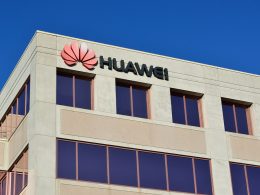Technical services are essential to businesses that rely on technology to function. These services include everything from IT support to equipment maintenance, and their performance has a direct impact on the overall efficiency and productivity of the business. To maximize performance in technical services, companies can turn to advanced technical services that utilize the latest technology to provide more efficient and effective support.
In this article, we’ll talk about why it’s important to get the most out of technical services and how modern technical services can help you do that. We will also provide examples of key performance indicators (KPIs) for technical services, outline how to monitor and measure KPIs, and detail the different types of modern technical services available. Finally, we will discuss how to integrate modern technical services into existing processes, utilize data and insights, and provide case studies of companies that have successfully implemented these services.
Introduction
Technical services encompass a wide range of support services that are critical to the success of modern businesses. They include IT support, equipment maintenance, network management, and many other services that ensure that technology is functioning as it should. With the increasing importance of technology in business, it is crucial that technical services are performing at the highest possible level. Advanced technical services can help achieve this goal by utilizing the latest technology to improve efficiency and effectiveness.

Identifying Key Performance Indicators (KPIs)
To maximize performance in technical services, it is essential to identify the right KPIs to measure. KPIs are measurements that can be used to evaluate the success of a particular service or process. For technical services, some essential KPIs include:
- Uptime: This is the amount of time that technology is available for use. High uptime is critical to ensuring that technology is available when it is needed.
- Response time: This measures the amount of time it takes for technical services to respond to a request for support. Short response times are essential for reducing downtime and ensuring that issues are resolved quickly.
- Resolution time: This measures the amount of time it takes for technical services to resolve an issue. Short resolution times are critical for reducing downtime and ensuring that technology is functioning as it should.
- Customer satisfaction: This measures how satisfied customers are with the support they receive from technical services. High customer satisfaction is critical for maintaining a positive relationship between the business and its customers.
Monitoring and Measuring KPIs
Once the right KPIs have been identified, it is essential to monitor and measure them to ensure that technical services are performing at the highest level possible. This involves:
- Establishing baseline KPIs: Before advanced technical services can be implemented, it is essential to establish baseline KPIs to determine the current level of performance. This provides a benchmark for evaluating the effectiveness of modern technical services.
- Monitoring KPIs in real-time: KPIs should be monitored in real-time to ensure that issues are identified and addressed as quickly as possible. This requires the use of monitoring tools that can track KPIs and provide alerts when thresholds are exceeded.
- Identifying trends and areas for improvement: By analyzing KPI data, trends and areas for improvement can be identified. This allows technical services to focus on the areas where improvements are most needed.
Implementing Advanced Technical Services
Advanced or modern technical services utilize the latest technology to provide more efficient and effective support. There are several different types of advanced or modern technical services available, including:
- Predictive maintenance: This involves using data and analytics to predict when equipment will require maintenance. By identifying issues before they occur, downtime can be reduced, and equipment life can be extended.
- Remote monitoring: This involves using sensors and other monitoring tools to remotely monitor equipment performance. This allows technical services to identify issues before they become critical.
- Automation: This involves automating routine tasks and processes to improve efficiency and reduce the risk of human error. This can include automating software updates or equipment maintenance tasks.
- Artificial Intelligence/Machine Learning: This involves using AI and ML to analyze large amounts of data to identify trends and patterns. This can be used to predict equipment failure or identify areas where improvements can be made.
By implementing modern technical services, businesses can benefit from the following:
- Improved efficiency: Advanced or modern technical services can automate routine tasks and identify issues before they become critical, which can improve efficiency and reduce downtime.
- Reduced downtime: By identifying issues before they become critical, advanced technical services can reduce downtime and improve uptime.
- Increased uptime: Advanced or modern technical services can improve uptime by identifying and addressing issues before they result in equipment failure or downtime.
- Cost savings: By reducing downtime and improving efficiency, advanced or modern technical services can result in cost savings for businesses.
Maximizing Performance with Advanced Technical Services
To maximize performance with advanced or modern technical services, it is essential to integrate these services into existing processes and utilize data and insights to make continuous improvements. This involves:
- Integrating advanced or modern technical services into existing processes: Advanced or modern technical services should be integrated into existing processes to ensure that they are utilized effectively. This may require changes to existing processes or the development of new processes to take advantage of advanced or modern technical services.
- Utilizing data and insights from advanced or modern technical services: Data and insights from advanced or modern technical services should be used to identify areas for improvement and make continuous improvements. This requires the use of analytics tools that can analyze large amounts of data and provide insights into performance.
- Continuously evaluating and optimizing advanced or modern technical services: Advanced technical services should be continuously evaluated and optimized to ensure that they are providing maximum benefit to the business. This may involve adjusting processes, fine-tuning algorithms, or implementing new technologies to improve performance.
Case Studies
Several companies have successfully implemented advanced technical services to maximize performance in technical services. For example, General Electric implemented a predictive maintenance program that reduced maintenance costs by 10% and unplanned downtime by 30%. Microsoft utilizes AI and ML to improve the efficiency of its data centers, resulting in a 40% reduction in energy consumption. Amazon utilizes automation to improve the efficiency of its fulfillment centers, resulting in faster delivery times and improved customer satisfaction.
Conclusion
Maximizing performance in technical services is critical to the success of modern businesses. Advanced or modern technical services can help achieve this goal by utilizing the latest technology to improve efficiency, reduce downtime, increase uptime, and provide cost savings. By identifying the right KPIs, monitoring and measuring performance, implementing advanced technical services, and continuously evaluating and optimizing these services, businesses can ensure that their technical services are performing at the highest level possible.












